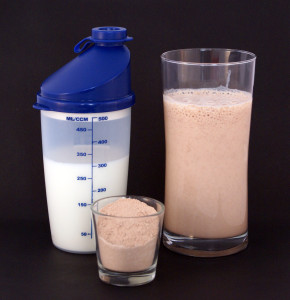
The world of bodybuilding supplements has hit an all-time high. With countless new products on the market claiming to “increase strength,” “improve definition,” and “burn fat,” it’s not uncommon to see students walking around campus with their Blender Bottle filled with neon-colored liquids.
Among the most popular of supplements on the market is creatine monohydrate, a powder blend that is designed to increase muscle stamina and, in turn, accelerate strength gains and overall athletic performance. But does it really work? The NCAA has not banned the substance, so it must be safe, right? For some, the jury is still out.
The idea behind creatine lies in its water-retaining qualities, says Junior Justin Adema, who has spent time working at a supplement store.
“Creatine shuttles water into your muscles keeping them hydrated during workouts. As a result, it increases muscle volume and aerobic capacity, enhances recovery, and can even increase brain function,” Adema said.
However, Adema noted, the effects of creatine are not all positive.
“Creatine can have some long-term negative effects on the liver, especially if it is not consumed with enough water,” Adema said.
Tim O’Brien of Twin Cities Athletic Services in Minneapolis has worked with a variety of athletes ranging from college football players to professional bodybuilders and offers expertise on both nutrition and exercise sciences.
“All creatine really does is cause your muscles to retain water, and when you stop taking it that water is lost. In general, I believe that nutrition from food is better than nutrition in supplements. I always tell my clients that they’re better off spending a little extra money on some extra eggs or something instead of creatine,” O’Brien said.
O’Brien also weighed in on the potential negative side effects associated with creatine use, referencing an incident he witnessed when he was living in Florida.
“In the 1990’s, when creatine first came on the scene, I remember the University of Central Florida was having a problem with their players fainting during practice. They thought it was their black uniforms, but it turned out that the players were taking creatine and not drinking enough water with it. They were actually fainting from dehydration,” O’Brien said.
The alleged risks associated with creatine use have not stopped athletes from taking it, according to recent Gustavus graduate Lucas Kleinschrodt. Kleinschrodt, who graduated last semester with a degree in Health Fitness, has spent time at the University of Minnesota working with Division I athletes. He also played football during his time at Gustavus.
“I have seen creatine used effectively and the benefits it can bring. I’ve used it myself, too,” Kleinschrodt said.
Kleinschrodt said that creatine is not just for athletes, but also for individuals that are into vigorous exercise.
“Anyone can use it as long as they use it safely. It’s good for athletes and also for people who are just serious about working out,” Kleinschrodt said.
Like most supplements on the market, the FDA has not said much about creatine. While notable sources such as Men’s Health magazine and other bodybuilding websites have recommended the use of the substance, the product has not been on the market long enough for conclusive findings related to its long-term effects.